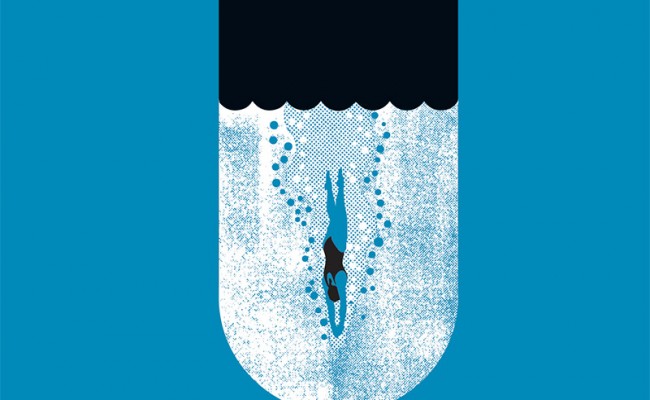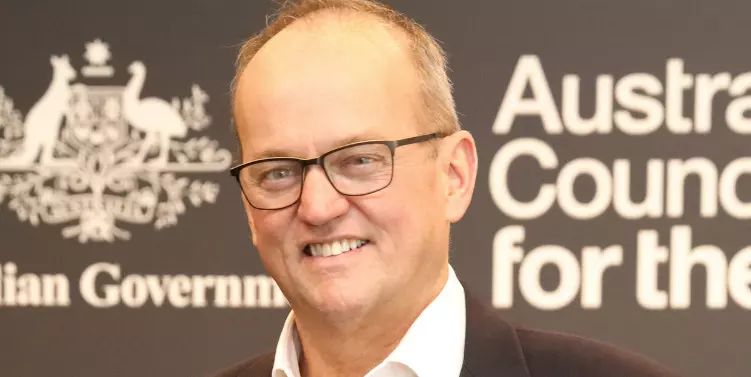Euthanasia remains a polarising topic. It garners popular support, incites expert opposition and sparks heated water-cooler discussions in offices around the country. Why? Because death is the one issue that affects everyone.
Euthanasia is illegal in Australia (with the recent exception of Victoria). While it’s not a crime to take your own life, it’s a crime to assist in the act. For a brief period, the Northern Territory’s Rights of the Terminally Ill Act 1995 permitted assisted dying – the first law in the world to do so – but was later voided by the Euthanasia Laws Act 1997, a move by the federal parliament to bring the matter back under its jurisdiction.
This last decade has seen increased political organising around the right to die, culminating in recent attempts to pass euthanasia legislation. In South Australia, the Death with Dignity Bill was defeated by one vote in 2016. In Victoria, the Voluntary Assisted Dying Bill has just been passed, with Labor MPs allowed a conscience vote on the issue.
The Voluntary Assisted Dying (VAD) Ministerial Advisory Panel, set up by the Andrews government to develop a framework for how euthanasia could work in practice, released its final report in July this year. The proposed program would be available to persons of sound mind over the age of eighteen who have an incurable disease likely to kill them within a year. There are stringent safeguards that include parameters around mental illness, dementia and disability. But the Bill has also been labelled one of the most conservative in the world, with some activists arguing that the demographic most in need of a reform – an ageing population seeking choices and control – is actually not represented.
Philip Nitschke is a physician, author and euthanasia advocate. He began his medical career in the Northern Territory in the early 1990s, when debate around VAD was in full swing, eventually becoming the leading spokesperson for the cause (and the first doctor in the world to administer a legal, voluntary lethal injection). Suicide, he believes, is a fundamental human right: each individual has the right to control their own death, as they have the right to control their own life.
Nitschke founded Exit International in 1997, soon after the Northern Territory law was overturned. For the next fifteen years, he was involved in a number of documented cases of VAD and spent time campaigning in Europe, the United States, New Zealand and Australia. In 2014, after a highly publicised case in which he counselled Nigel Brayley – a reportedly healthy man – on how to end his life, Nitschke lost his licence to practise medicine in Australia.
Nitschke maintained that Brayley was not depressed and that his mind was made up (he had already ordered suicide drugs from China before attending Nitschke’s seminar). Nitschke also stressed that at no point was he acting as Brayley’s doctor or providing specific medical advice. The Medical Board of Australia (MBA) disagreed, arguing that Nitschke was ethically and legally obligated to refer Brayley to a psychologist or psychiatrist, especially as Brayley had disclosed in an email that he was not ‘supporting a terminal medical illness’. The MBA also argued that Nitschke’s public advocating for VAD was inconsistent with the profession’s code of conduct and posed a risk to public health and safety (despite the fact that Nitschke had not been a practising doctor for over a decade). Nitschke’s suspension was overturned on appeal, but on the condition that he permanently refrain from providing advice or information on VAD.
Nitschke regarded the MBA’s ultimatum as an attack on his free speech; the board’s ruling, he argued, was based on objection to his beliefs rather than his actions. In retaliation, Nitschke burnt his registration certificate and formally announced the end of his medical career.
This was not the first time Nitschke’s free speech had been violated. In 2007, his Peaceful Pill Handbook (co-authored with Fiona Stewart, former executive director of Exit International) was banned in Australia. The handbook was primarily targeted at the elderly, but also provided information for their friends and families, as well as for those working in aged care or public health. Fifteen approaches to euthanasia are covered, including gases, poisons, non-prescription drugs and assisted-suicide services.
The suppression of supposedly harmful opinions or information – achieved through prosecution by relevant government agencies – has cropped up around many contentious moral issues in Australia’s past: consider, for example, the treatment of works sympathetic to sex outside of marriage (Lady Chatterley’s Lover, banned 1929–1965), inter-racial relationships (Another Country, banned 1962–1966) or homosexuality (The City And The Pillar, banned 1948–1966). In each of these cases, the dissemination of these themes was objected to and the books restricted, deemed unsuitable for the Australian reader.
Debates on censorship have been around since the invention of the printing press, over 500 years ago. In 1644, the poet John Milton published Areopagitica: A Speech of Mr John Milton for the Liberty of Unlicenc’d Printing, to the Parliament of England, an impassioned treatise on free expression and the need for open access to information. Drawing on a range of biblical and classical references, Milton argues that censorship and licensing undermine rational debate and are therefore harmful to society as a whole.
It’s an argument that was particularly relevant to Australia in the 1960s and 1970s, when the country underwent radical changes to its social policies. This included an overhaul of the country’s strict censorship regime – one that was at times considered harsher than apartheid South Africa and religiously conservative Ireland. A few cases of book censorship in particular fuelled the public outcry that led to change. For example, the restriction of James Baldwin’s Another Country, banned for obscenity in 1963, was met with protest from the public and the case gained further attention when then Labor deputy leader Gough Whitlam had his illegal copy seized by Customs in 1964. Philip Roth’s 1969 Portnoy’s Complaint, a monologue from a lusting young Jewish bachelor protagonist, was also an important case, and its domestic publication resulted in prosecutions in five states. Under Donald Chipp, minister for customs and excise (1969–1972), and following the election of the Whitlam government in 1972, Australia’s obscenity laws were reformed; by 1973, the number of books refused classification (banned) was reduced to zero.
Central to the reform process was a shift in how controversial materials were assessed and treated. In the past, works deemed ‘immoral’ would be outright banned, whereas from the 1970s they would be given an advisory rating that restricted access based on age. Thus consenting adults were able to make informed choices about the content they wished to read or view.
The banning of Peaceful Pill marked a return to a morality framework; while the decision is based on promotion in matters of crime, it is driven by ethical concerns and the current moral debate around the preservation of life (as opposed to, say, depictions of extreme violence or child sexual abuse). Peaceful Pill was only the third book to be banned in Australia since 1973. (The other two are Jihadist texts: Join the Caravan and Defence of the Muslim Lands, both by Abdullah Yusuf Azzam and both banned in 2005).
For most of the twentieth century, censorship of printed materials was the keystone to control of information; by limiting the circulation of books, magazines or pamphlets, governments were able to shape public attitudes and social mores. While the means of dissemination have grown widely in recent years, particularly through online and mobile technologies, approaches to censorship have changed very little.
Past cases show just how difficult it is to maintain censorship standards. For one thing, it’s hard to draw lines: certain content ends up being cherrypicked and made an example of, while similar content remains unrestricted. Consider the high-profile 1988 case around Spycatcher, in which the British government attempted to suppress former MI5 officer Peter Wright’s exposé of security service techniques, technologies and ethics, or art photographer Bill Henson’s controversial 2008 exhibition that featured photography of a nude thirteen-year-old girl. These cases are examples of specific publications or artworks being used to demonstrate the government’s power to limit, suppress or censor.
Efforts to regulate access to Peaceful Pill proved tricky. The book was immediately restricted in both Australia and New Zealand, but was available for purchase on Amazon in both the UK and the US. The book’s initial 18+ rating was overturned after an appeal by then attorney-general Philip Ruddock and Right to Life NSW, after which it was refused classification – meaning it cannot be sold in printed form within Australia.
Although the printed book is banned, it remains widely disseminated around the world. An online version, which retails for $85, was published in 2008 and includes videos on various suicide methods. Nitschke argues that while it’s possible for those who are not terminally ill to access the material, this risk is negated by the needs of those who are. Apparently Exit International keeps a list of the people who access the book online.
Availability and opinions on euthanasia aside, it’s the attempt at restricting the information contained in Peaceful Pill that should be rigorously examined.
Free speech is not an absolute value, even in democratic states. In contemporary society, there are recognised limitations on free speech and justifiable (yet contested) arguments to make in favour of restrictions. Slander and defamation are examples of limitations, as is the recent debate around Sections 18C and 18D of the Racial Discrimination Act 1975. Of course, such restrictions need to be balanced with the right to access information. After all, the first listed principle of Australia’s Classification Code states that ‘adults should be able to read, hear and see what they want’.
The enduring criterion for determining what should be censored hinges on the presumed effects on the ‘consumer’, with the final judgement resting on what are assumed to be contemporary ‘Australian values’. Censorship emerges when a prospective change in behaviour or attitudes has been determined to be harmful, based on accepted codes of moral conduct – in the case of Peaceful Pill, the supposed effect would be a devaluing of the sanctity of life.
The Australian Classification Board, as established in the Classification (Publications, Films and Computer Games) Act 1995, is responsible for censorship decisions of all kinds, including for literature. Any challenges to a decision are referred to the Classifications Review Board.
The board received an application to review Peaceful Pill’s X18+ rating on 10 January 2007. The classifiable elements in question were adult themes, violence, sex, language, drug use and nudity. The reasons to refuse classification were made public six weeks later, with the final report indicating a unanimous decision from the board. According to the report,
[Peaceful Pill] instructs in matters of crime relating to the manufacture of a prohibited drug (barbiturates), including the attempt to manufacture a prohibited drug (barbiturates); the storage of substances being used for the manufacture of a prohibited drug (barbiturates); and gives instructions enabling individuals to ‘take part in’ the manufacture of a prohibited drug (barbiturates).
The report states that the final decision was informed by the standards of morality, decency and propriety generally accepted by reasonable adults, with literary, artistic and educational merit also taken into account.
Peaceful Pill outlines non-violent methods of suicide, with chapters on the Exit Bag (a large plastic bag with a drawstring used to commit suicide through inert gas asphyxiation); non-drug substances, such as lethal inorganic salts (sodium cyanide, sodium azide and sodium nitrite); and a variety of drug options, including morphine, insulin, chloral hydrate and pentobarbital, commonly known by its American brand name, Nembutal.
It’s worth noting how violent methods of suicide tend to be prevalent – and not as closely scrutinised – in fictionalised forms, be they written, visual or cinematic. For example, the Netflix series 13 Reasons Why, based on a young-adult novel of the same name, recently attracted a flurry of attention for its portrayal (and alleged glorification) of suicide.
Efforts to censor the practical information outlined in Peaceful Pill didn’t stop with the book. When Exit International set up an information line, the federal government introduced legislation banning the delivery of suicide information over the telephone. A Peaceful Pill website – again, containing information and advice – was also included in the government’s ‘Clean Feed’ internet filter plan of 2009. In response, Exit International provided information on how to use proxy servers to access banned sites. Exit International also created TV ads advocating for VAD, but these were banned in 2010 by Australia’s advertising classification body, Commercials Advice (CAD). Although the ads never made it to air, they are freely available on YouTube, and can even be viewed in Australia.
Exit International has worked hard to combat censorship at every turn and to ensure information is available to those desirous of it. As a result, the only successfully enforced censorship measure has been prohibiting the purchase of physical copies within the borders of this country.
Euthanasia is an interesting case study for the attempted restriction of information: it’s fundamentally a moral argument that has been politicised and then criminalised, not unlike the debate around the legalisation of the contraceptive pill in the 1960s. But a government determining what is morally right and wrong for citizens must be considered an anachronism, and with it the belief that access to information will negatively affect the public’s ability to make ethical decisions.
The obstruction of information that is in the public interest, such as that related to euthanasia, has heightened interest in how and why censorship decisions are made. As with personally affecting moral issues that have come to debate and legal reform in the past, this occurrence has historical parallels. In late 1969, journalist and activist Wendy Bacon joined a collection of like-minded writers and activists working on Tharunka, the University of New South Wales’ student newspaper. When funding dwindled to the point where Tharunka could no longer continue, Bacon was involved in the launch of an underground version called Thor, which was distributed and sold mainly in pubs. Tharunka and Thor covered that which the government did not want magnified: conscription, homosexuality, film censorship, women’s liberation, drugs. Coverage came in the form of stories, poems, cartoons, essays and extracts. The aim, Bacon wrote in a 2011 Overland article, was not to publish sexually arousing or stimulating material, but to confront live political issues.
While, pragmatically speaking, contemporary censorship efforts do not necessarily obstruct the public from obtaining information, they continue to have a significant impact. As Bacon wrote, ‘The terrain shifts but the struggle continues.’ In cases heavily resting on a moral decision, the restriction of material is often linked to the propagation of a political agenda – of garnering control, rather than of acting in the public interest. Indeed, euthanasia is one of the few areas of politics where corporate influence doesn’t seem to be a factor or explain political opposition.
In Australian society, policing any moral issue is a tricky area for government. Euthanasia is a deeply personal issue, and further than this, it is an issue directly reflective of society’s ever evolving idea of morality and how it plays out in legislation. Perhaps euthanasia is to contemporary Australia what the abolition of conscription, the legalisation of the contraceptive pill and the acceptance of homosexuality and sexual liberation were in the past: a chance for the government to gauge and act upon the sentiment of the public. The debate around euthanasia has been rich; as with any moral debate, it should continue, with public access to information such as Peaceful Pill ensured.
Read the rest of Overland 229
If you enjoyed this essay, buy the issue




